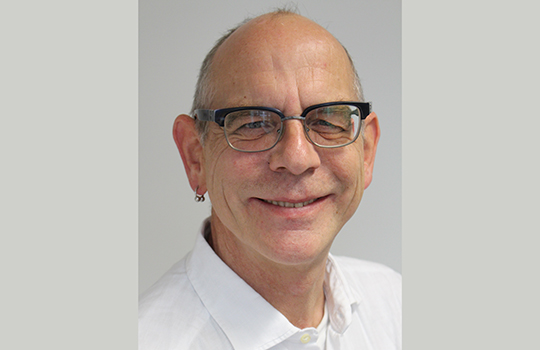If the medical educators of the future are to be experts in patient centredness, this must be reflected at conferences, says Matthias Wienold
 It is truly a great privilege to get to know the professors, lecturers, and researchers who make and shape medical education. They are the ones who strive to transform motivated young people into the doctors of the future. Now, imagine thousands of them in one place at one conference and you have AMEE, the annual meeting of the International Association for Medical Education.
It is truly a great privilege to get to know the professors, lecturers, and researchers who make and shape medical education. They are the ones who strive to transform motivated young people into the doctors of the future. Now, imagine thousands of them in one place at one conference and you have AMEE, the annual meeting of the International Association for Medical Education.
AMEE has begun to invite individual “patients” to talk about their experiences as, increasingly, this is recognised as being important in the training and teaching of medical students. This year, I was asked as a representative of the International Alliance of Patients’ Organizations (IAPO) to voice the “demands” of patient organisations. I raised a number of areas where patient organisations see the need for change: including improved patient participation in all aspects of medical education, the call by patients for more and better qualified health professionals, and professional support for patients’ interest in learning more about medicine and health, as well as their conditions. Further to this last demand, I called for the resources used in medical education to be available online for free, to create an opportunity for patients to learn from them in addition to the materials produced specifically for patients.
Participants widely agreed that more effort should be made to put the patient at the centre of medical education. The annual AMEE conference is missing an opportunity to do this. Comparing the AMEE conferences with my experience as a patient advocate at the conferences of the International AIDS Society (since 1989) shows that there is room for improvement.
The International AIDS Society works with four different HIV community organisations when developing its conferences—three are constant, and one changes each time.They participate in all the planning stages and provide input to steer key decisions, for example, the selection of keynote speakers. The International AIDS Society also usually provides 200 scholarships for patients and a limited number of full travel scholarships. Registration fees are waived for media representatives of community based organisations. HIV status is not evaluated (to my knowledge), but I would guess that there are typically around 400 to 500 people living with HIV (including researchers) who attend out of 12 000 to 15 000 participants.
So how can AMEE follow this kind of example and ensure that more patients get the opportunity to attend this important annual event, enliven its debates, and help the medical education community realise its stated aim of putting patients at the centre of medical education? I’d suggest that the following steps are needed:
1) The organisers should plan to factor in the cost of patient involvement when they begin planning their conference. From the first planning steps to the evaluation of meetings, patient organisations should become involved—and should be represented through more than one civil society organisation. It’s vital that more than one patient is consulted throughout the entire process. If organisers budgeted for this at the start, it would allow for fuller participation by patients (very few of whom are formally employed in a teaching capacity by medical schools).
2) Experts from patient communities (i.e. those with expertise in medical education) should be invited to contribute fully to the conference programme. As keynote speakers, co-chairs, and discussants, there is scope for patients to have more of a presence and a much stronger voice. Giving patients a forum to present reports about their own efforts in teaching and in being “patient actors” in medical education offers an opportunity to share ideas to the benefit of medical curricula.
3) Creating a patients’ lounge and reference centre (a staffed post) would provide both a meeting point and a place for rest and medical care (if needed). It could also serve as a meeting point for patients to discuss the development of shared education and research proposals.
4) Within the AMEE conference secretariat, there’s room to explore the role of a facilitator who would share patients’ ideas and input among staff (a defined staff position of a “community organiser”).
AMEE is well positioned to reshape its meetings to provide the opportunities, space, and time for more patient partnership. Furthermore, the in-depth study of how best to teach students in their various health professional groupings could also be applied to current approaches in patient education. This would certainly also open up opportunities to transfer the knowledge from the patient education field to medical education. A new academic discipline of composite and complementary learning between patients and students (who are training as health professionals) could be developed.
Patient organisations are interested in and prepared for collaboration with medical educators, and such a move is supported by the International Federation of Medical Students Associations. The medical educators of the future should be experts in patient centredness. This won’t happen without respectful, structured, and sustained dialogue in person and on an equal footing between patients, students, and educators at international conferences and in medical schools.
Note: I thank AMEE for waiving my registration fee and for the invitation to come to their conference this year.
Matthias Wienold, MD, MPH, has been working with patient organisations since 1986. He is a member of the European AIDS Treatment Group and is also a member of The BMJ’s patient panel. He educates patients (as a volunteer) and physicians (as a peer messenger).
Competing interests: None.
See Matthias’s profile on The BMJ’s patient panel page.
